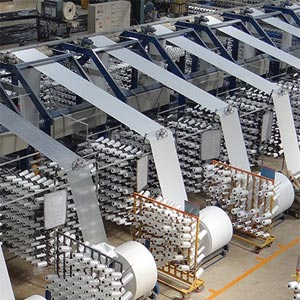
On a global scale, the packaging industry is an enormous economic generator. Statistics from the well-recognized Smithers Pira organization indicate demand for the world packaging industry will reach 1.05 trillion by 2024. Consumer trends and industry trends for packaging drive this gigantic growth rate. India has the potential to be the spine of the world's industrially manufactured product demand due to various driving factors starting with high unemployment rate and high working-age labour availability.
Besides, the challenges faced by packaging companies today starts with the unavailability of industrial land at competitive rates, followed by aggressive power tariffs, poor power supply quality, the high cost of logistics, and lack of single window clearance for permission to build & operate factories.
Significantly, Topsack is a completely family-owned business giving an unprecedented understanding of the company’s DNA, superior control over all the critical performance factors, and the ability to make overnight changes according to the situation's demand. Though the company is a family business it is far from old school way of working. Topsack uses some of the best machines & equipment in the world to ensure best in class production quality output to stay ahead of the competition.
The management team gets involved in every high-value purchase negotiation and rates of
critical purchases are compared with suppliers from across the world as a standard operating procedure giving unprecedented control over the input costs. “We have consistently received an A+ rating from our customers on critical parameters such as product quality, satisfaction rate, and on-time delivery. Any complaint received from the customer is strictly responded to within few hours and mostly resolved within 48 hours. We truly believe in the saying Customer is King,” says Sunil Kumar V, Sr. Purchase Executive at Topsack Packaging.
Quality Valued Consistency based Approach for Steady Business Growth Moreover, Topsack specializes in the development and customization of FIBCs for customers based on their requirements. There are numerous manufacturers of FIBCs however very few have the know-how of engineering bags and house the R&D facility for the development of products to the new users, the company specifically cater to their usage pattern and the material filled. In the FIBC lineup, there are several varieties and can be broadly classified into 5 to 6 categories based on the complexity level of the product and manufacturing time involved.
Topsack produces all varieties of FIBCs right from the raw material stage giving the customers a single function solution. From being the number one manufacturer of HDPE tarpaulins in South India in 2010 to one of the biggest printed small bag exporters in 2014 was quite a journey for Topsack. The company has customers across the world today and has been growing at a rate of more than 20% every year. Topsack is a well-known name in both the USA and Europe today in the FIBC supplier space.
We have consistently received an A+ rating from our customers on critical parameters such as product quality, satisfaction rate, and on-time delivery.
Currently, Topsack is in the process of constructing a brand new infrastructure of over 3, 00,000sft of production area that will boast one of the best FIBC manufacturing infra in the world. The company is looking forward to creating employment for over 1600 skilled & unskilled workers and increase employment for women wherever possible to align with the national goal and focus on women empowerment.
Every year there has been significant growth in packaging demand by customers from the USA and Europe from Indian manufacturers due to the ease of working quotient as against China. This trend is likely to go upwards with China losing its low-cost labour advantage that it enjoyed for several decades. “At Topsack we look forward to stay alert and be the forerunners in grabbing this organic advantage. In our quest to be best we will leave no stone unturned when it comes to the quality and efficiency of infrastructure,” concludes Sunil Kumar V.
We use cookies to ensure you get the best experience on our website. Read more...